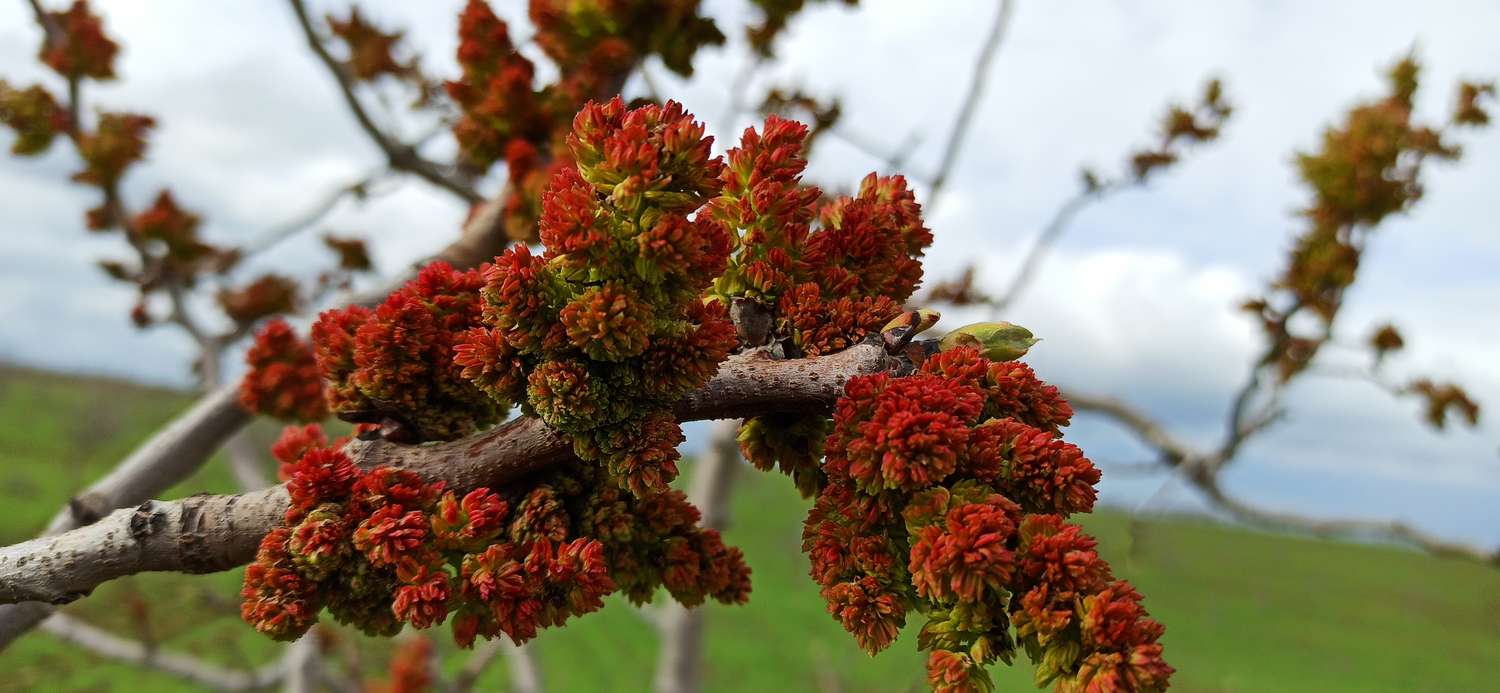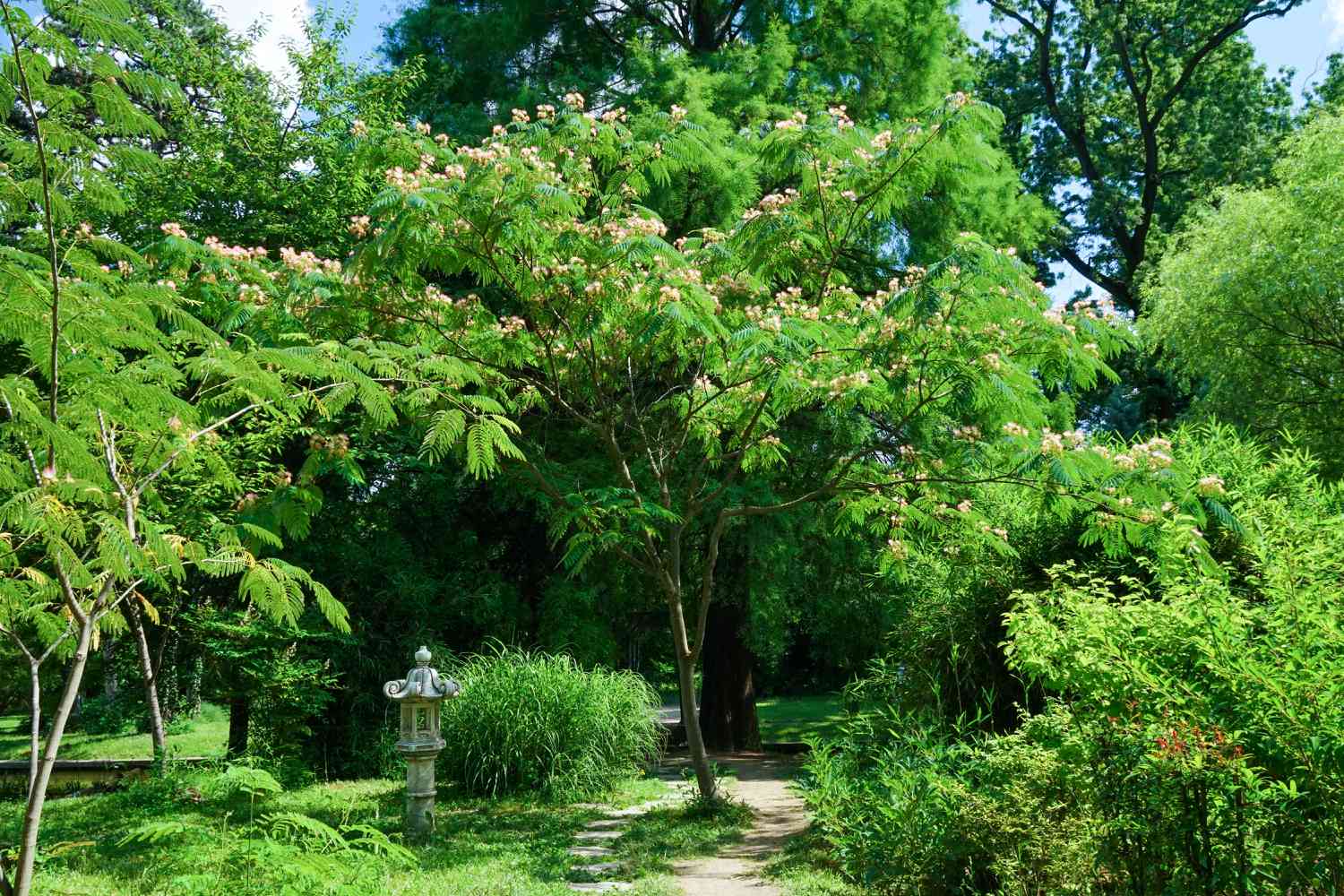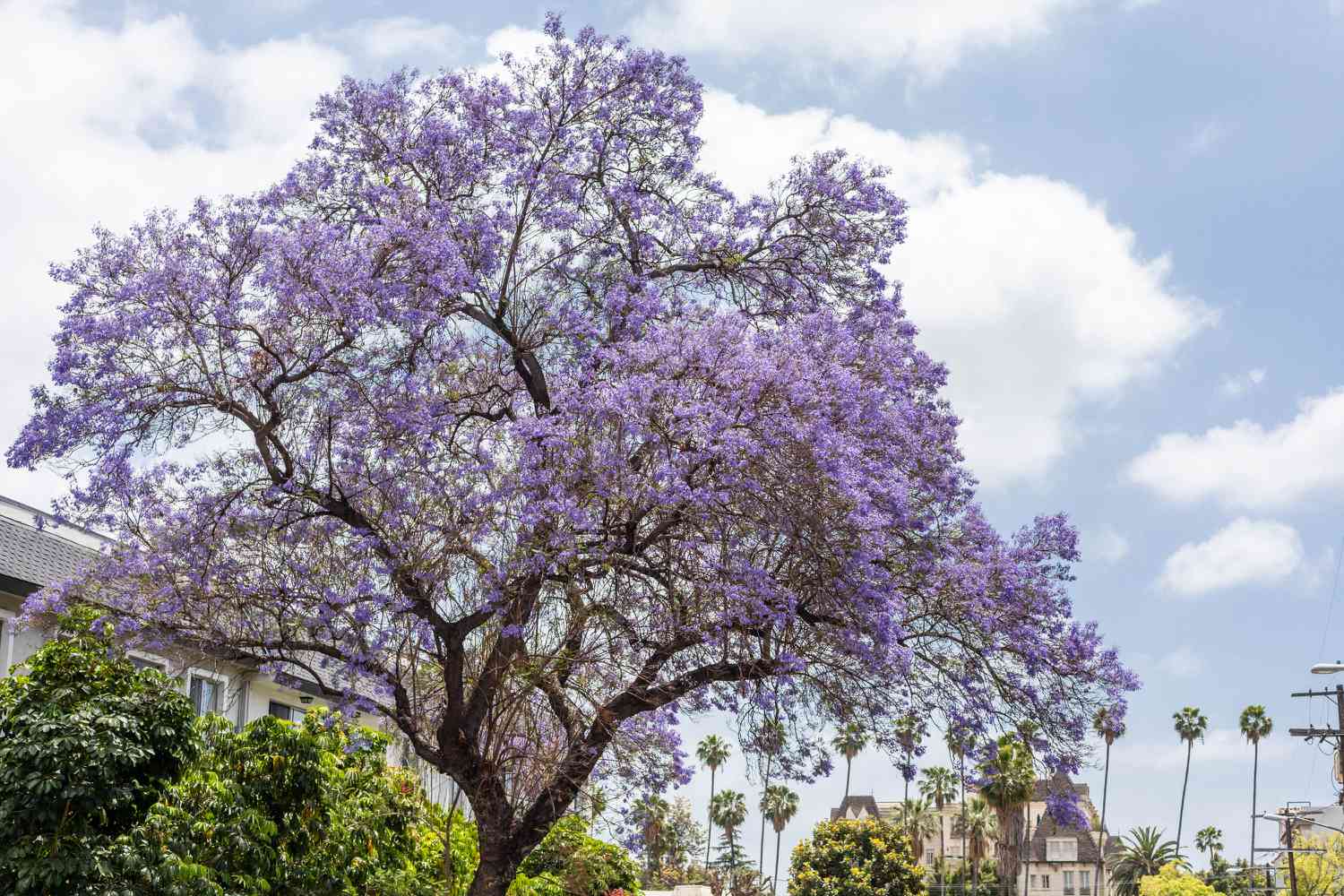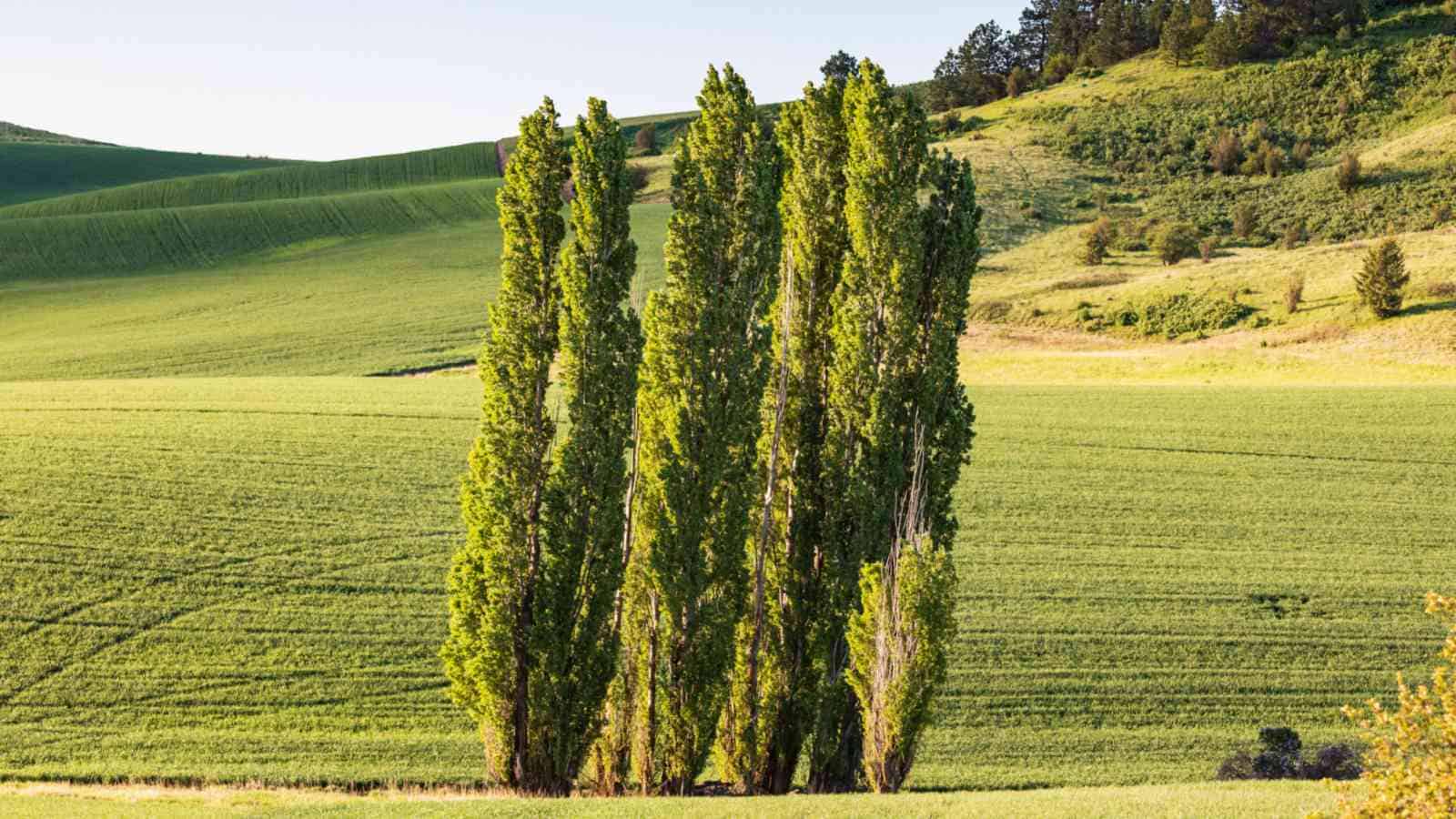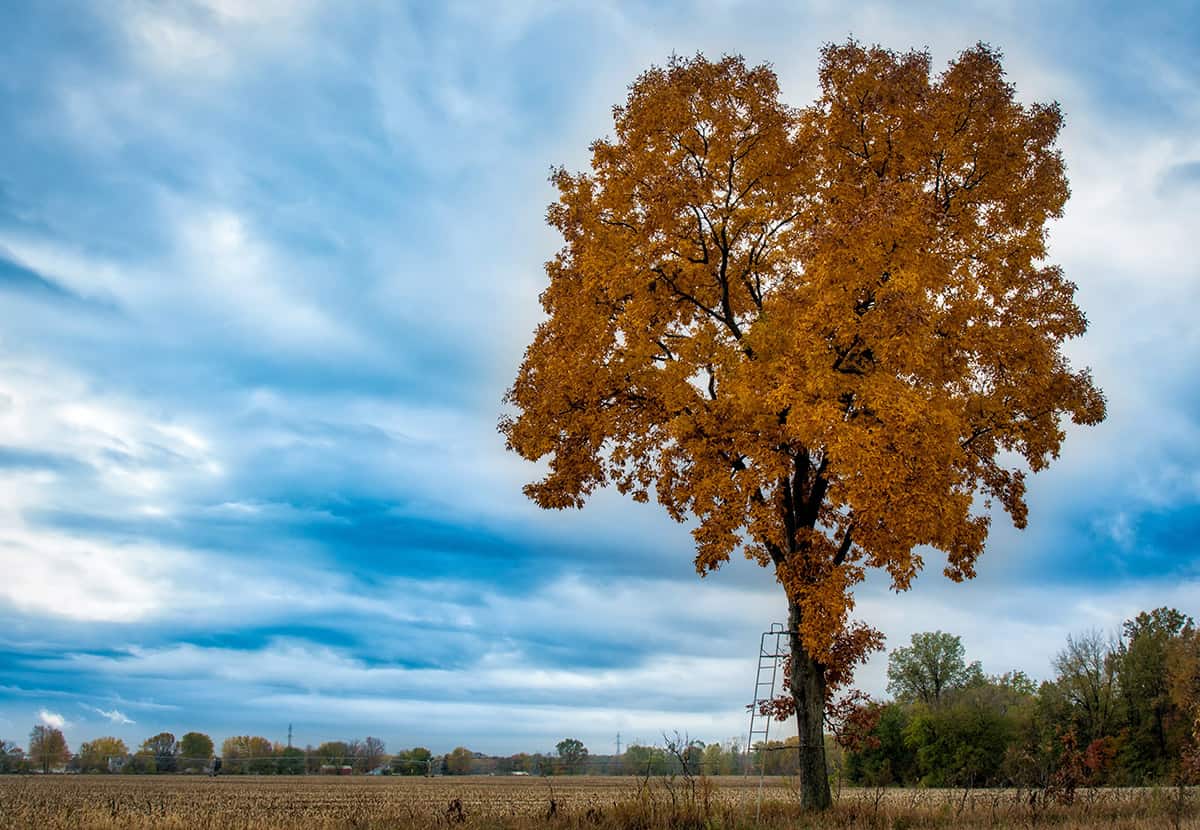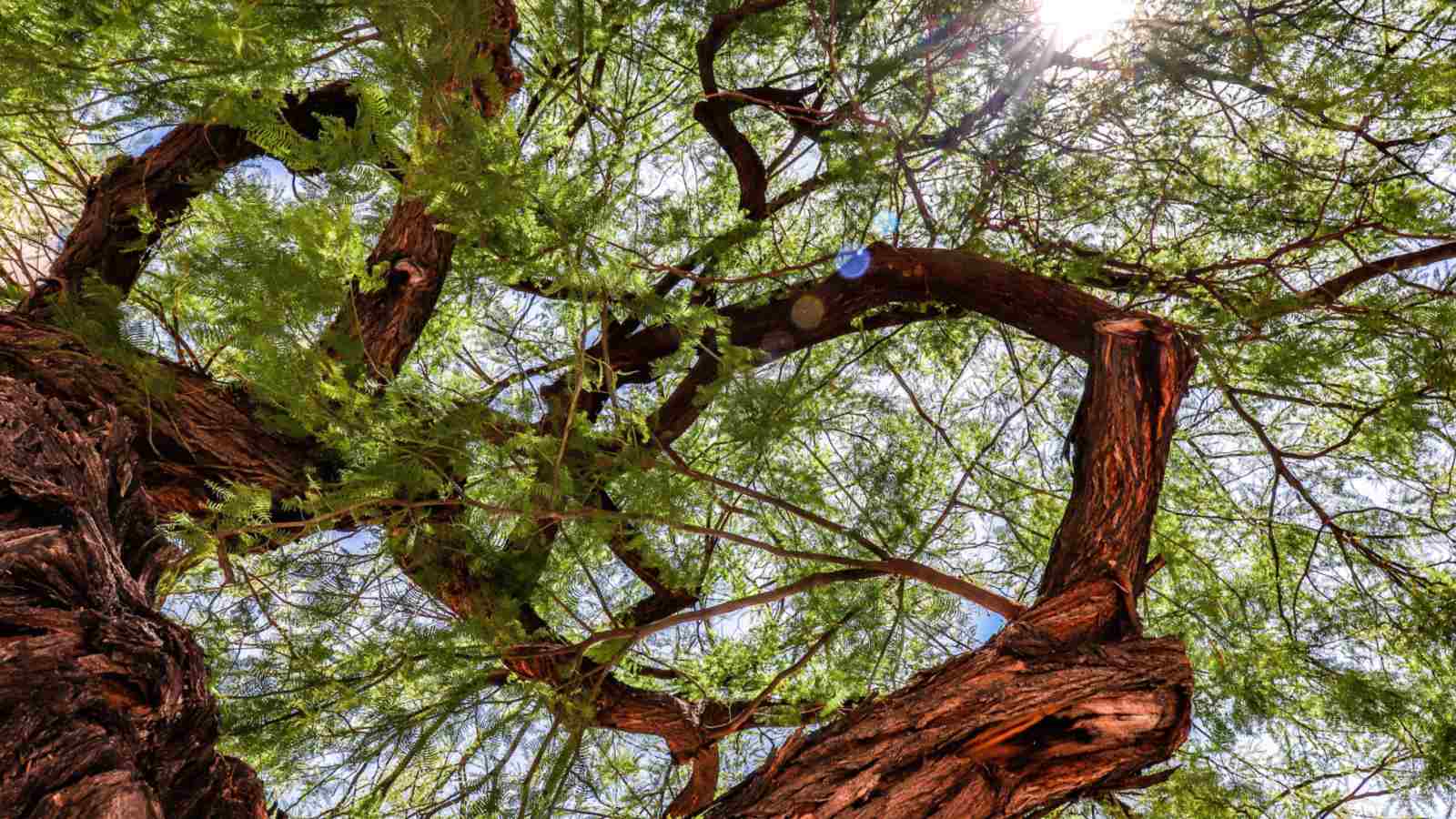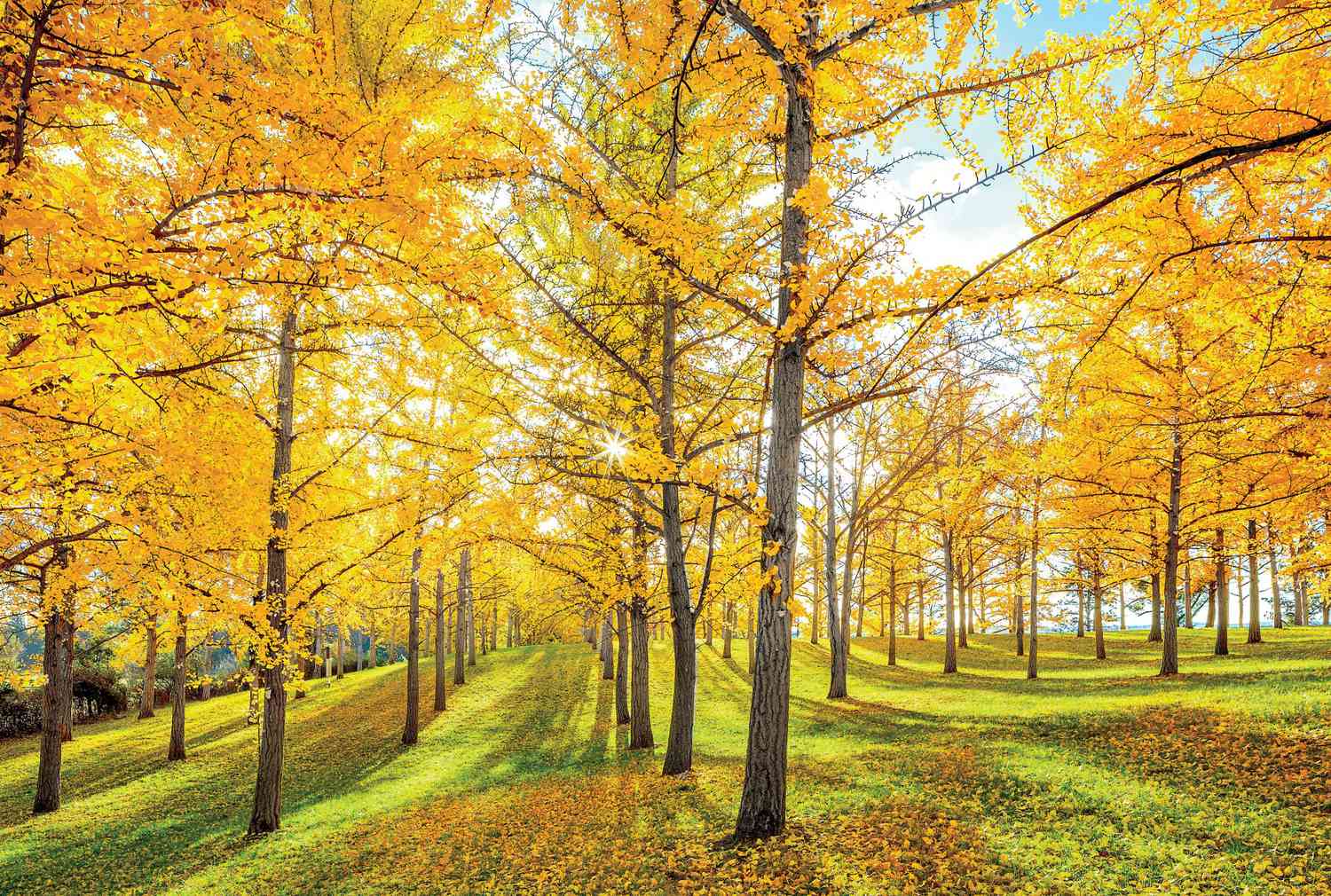Home>Types of Gardening>Edible Gardening>Where Do Persimmon Trees Grow


Edible Gardening
Where Do Persimmon Trees Grow
Modified: January 22, 2024
Learn all about the ideal growing conditions for persimmon trees and how to incorporate them into your edible gardening.
(Many of the links in this article redirect to a specific reviewed product. Your purchase of these products through affiliate links helps to generate commission for Chicagolandgardening.com, at no extra cost. Learn more)
Table of Contents
Introduction
Edible gardening has gained tremendous popularity in recent years, as more and more people are discovering the joy and satisfaction of growing their own food. One particular tree that has captured the attention of both seasoned gardeners and novices alike is the persimmon tree. With its luscious fruit and stunning appearance, the persimmon tree has become a favorite addition to edible gardens around the world.
But before you rush out and buy a persimmon sapling, it’s important to understand the climate requirements and geographical distribution of these trees. Persimmon trees have specific environmental needs that must be met in order to thrive and produce optimal yields. Understanding the ideal growing conditions for persimmon trees will help you determine whether your location is suitable for planting one.
In this article, we will explore the climate requirements for persimmon trees, as well as their geographical distribution around the world. We will delve into the specific growing zones for persimmon trees in North America, Europe, and Asia. Additionally, we will discuss other factors that can affect the growth and productivity of persimmon trees. By the end of this article, you will have a comprehensive understanding of where persimmon trees grow and how to create an ideal environment for their success.
Climate Requirements for Persimmon Trees
Persimmon trees (Diospyros kaki) are native to East Asia but can be cultivated in various regions around the world. These trees have specific climate requirements that must be met in order for them to thrive and produce high-quality fruit.
First and foremost, persimmon trees require a temperate climate. They prefer regions with mild winters and hot, humid summers. The ideal temperature range for persimmon trees is between 50°F (10°C) and 90°F (32°C). Extreme cold or frost during the winter months can damage the tree, while prolonged periods of heat and drought can cause stress and reduce fruit production.
Additionally, persimmon trees require a certain number of chilling hours to enter their dormant stage during the winter. Chilling hours are the cumulative number of hours that a tree experiences temperatures between 32°F (0°C) and 45°F (7°C). This period of dormancy is crucial for the tree’s overall health and subsequent fruit production. The required number of chilling hours varies depending on the specific persimmon tree variety.
Persimmon trees also prefer well-drained soil. They do not tolerate waterlogged or soggy conditions, as this can lead to root rot and other diseases. Ideally, the soil should be loamy with a pH range of 6.0 to 7.5. It is beneficial to amend the soil with organic matter such as compost to improve its structure, drainage, and nutrient content.
Another important factor to consider is sunlight exposure. Persimmon trees thrive in full sun, which means they need at least 6 to 8 hours of direct sunlight per day. Insufficient sunlight can result in poor growth, weak fruit production, and susceptibility to diseases.
Finally, persimmon trees require a certain amount of humidity to flourish. They prefer regions with moderate to high humidity levels, as this helps prevent the tree from drying out and promotes healthy leaf and fruit development.
By understanding and meeting these climate requirements, you can create an optimal environment for your persimmon tree to grow, thrive, and produce delicious fruit. It is essential to research and choose persimmon tree varieties that are well-suited to your specific climate to maximize your chances of success.
Geographical Distribution of Persimmon Trees
Persimmon trees have a wide geographical distribution, with their native range primarily in East Asia. However, due to their adaptability, persimmon trees can now be found in various regions around the world.
In their native range, persimmon trees are cultivated in countries such as China, Japan, and Korea. These countries have a long history of growing and consuming persimmons, and they have developed numerous cultivars that are well-adapted to their specific climates and growing conditions.
Outside of East Asia, persimmon trees have been successfully introduced and cultivated in different parts of the world. In North America, persimmon trees can be found in the southern and eastern regions, particularly in the United States. States such as Georgia, Alabama, and Texas have favorable climates for persimmon cultivation. The American persimmon (Diospyros virginiana) is a native persimmon species that is commonly grown in these regions.
Europe also has its share of persimmon tree cultivation, primarily in Mediterranean countries. Spain, Italy, and Portugal are known for their persimmon production, with varieties like the ‘Rojo Brillante’ being highly sought after. Other European countries, such as France, Greece, and Turkey, also have smaller-scale persimmon cultivation.
In Asia, outside of the East Asian countries where persimmons are native, countries such as India, Vietnam, and Thailand have also started growing persimmon trees. These regions offer suitable climates and are beginning to develop their own persimmon cultivars.
In recent years, persimmon cultivation has expanded to other parts of the world as well. Australia, Argentina, Brazil, and South Africa have seen successful cultivation of persimmon trees, capitalizing on their favorable climates and growing conditions.
It’s important to note that the specific persimmon tree varieties grown in each region may vary, depending on their adaptability to the local climate and market demands. Different persimmon varieties have different characteristics, such as fruit size, taste, and texture, which can influence their popularity and commercial viability.
The geographical distribution of persimmon trees continues to expand as more regions discover the potential of growing these fruit-bearing trees. This widespread cultivation allows people from different parts of the world to enjoy the delicious and unique flavor of persimmons.
Persimmon Tree Growing Zones in North America
North America offers a range of climates suitable for growing persimmon trees, particularly in the southern and eastern regions. Understanding the specific growing zones in North America will help gardeners in these areas determine which persimmon varieties will thrive in their location.
The United States Department of Agriculture (USDA) has divided North America into distinct hardiness zones, based on average minimum winter temperatures. These zones provide valuable information for gardeners and farmers to identify which plants and trees can survive and flourish in their specific region.
In North America, persimmon trees are primarily cultivated in USDA hardiness zones 7 to 9. Zone 7 encompasses certain areas of the southeastern United States, including states like Georgia, Alabama, and Mississippi. In these zones, persimmon trees typically thrive due to the mild winters and hot, humid summers.
Zone 8 covers a broader area, including states like Texas, Louisiana, and Florida. The long growing season and warm temperatures in these zones are particularly favorable for persimmon cultivation. The American persimmon (Diospyros virginiana), which is native to North America, is well-adapted to these zones and can be found growing in abundance.
While persimmon trees can tolerate some degree of cold, it is important to note that they may require additional protection in northern areas or regions with harsher winters. In cooler climates, gardeners should consider planting cold-hardy varieties or providing some form of winter protection, such as wrapping the tree trunk or covering the tree with protective fabric during the coldest months.
It’s worth mentioning that microclimates within each zone can also influence the success of persimmon tree cultivation. Factors such as proximity to bodies of water, elevation, and prevailing winds can create local variations in temperature and frost patterns. Gardeners should be aware of their specific microclimate and take it into consideration when selecting persimmon tree varieties.
Overall, North America provides a range of suitable growing zones for persimmon trees. Choosing the right persimmon variety and implementing proper care and maintenance practices can help gardeners in these zones enjoy a bountiful harvest of delicious persimmons.
Persimmon Tree Growing Zones in Europe
Europe offers a diverse range of climates, allowing for the successful cultivation of persimmon trees in specific regions. Understanding the growing zones in Europe will help gardeners determine the suitability of their location for growing persimmon trees and select appropriate varieties.
In Europe, persimmon tree cultivation is primarily found in Mediterranean countries due to their warm and temperate climates. Spain, Italy, and Portugal are renowned for their production of persimmons, with the majority of European persimmon orchards located in these countries.
The Mediterranean climate is characterized by hot, dry summers and mild, wet winters, providing optimal conditions for persimmon trees. These trees thrive in the warmth of the Mediterranean region, allowing for vigorous growth and high fruit yields.
Outside of the Mediterranean region, persimmon trees can also be found in countries like France, Greece, and Turkey. Although these regions may have slightly different climatic conditions, they still offer suitable environments for persimmon cultivation.
It is important to note that persimmon tree cultivation in Europe is mainly focused on non-astringent varieties, which are sweeter and can be eaten when firm. Some popular European persimmon varieties include ‘Rojo Brillante’, ‘Fuyu’, and ‘Jiro’.
While persimmon trees can thrive in Mediterranean climates, certain regions within Europe may have limitations for persimmon cultivation due to colder temperatures. In northern Europe and higher elevations, where winters are harsher and temperatures can drop significantly, growing persimmons may be more challenging. In these areas, gardeners may need to consider using protective measures, such as planting in sheltered locations or covering the tree during colder months.
It’s important for gardeners in Europe to choose persimmon varieties that are well-suited for their specific growing zone. Conducting thorough research and seeking advice from local experts or nurseries can help ensure success in persimmon tree cultivation.
Despite the climatic variations across Europe, the continent offers suitable growing conditions for persimmon trees in various regions. With the right care and selection of appropriate varieties, European gardeners can enjoy the beauty and bounty of persimmon trees in their own backyards.
Persimmon Tree Growing Zones in Asia
Asia is the native region of the persimmon tree, and it is undoubtedly the most significant producer of persimmons globally. The favorable climates across different parts of Asia offer ideal conditions for persimmon tree cultivation. Understanding the specific growing zones within Asia can help guide gardeners in this region to successfully grow persimmon trees.
China, Japan, and Korea are the primary countries in East Asia where persimmons are extensively cultivated. These countries have a long history of persimmon production and have developed various cultivars that are well-adapted to their specific climates.
In China, persimmons are grown in regions such as Zhejiang, Fujian, and Shanxi provinces. The climate in these regions is generally mild, with warm summers and cool winters. China has a wide range of persimmon varieties, including both astringent and non-astringent types.
In Japan, persimmon cultivation is widespread across the country, with major production regions in Aichi, Wakayama, and Fukuoka prefectures. Persimmon trees are well-suited to Japan’s temperate climate, which features mild springs, hot summers, and cool autumns. The Japanese have developed renowned persimmon varieties like ‘Fuyu’ and ‘Jiro’.
In Korea, persimmons are mainly grown in the southern parts of the country, including regions such as Jeolla and Gyeongsang provinces. The Korean persimmon industry is focused on non-astringent varieties, and the climate in these areas allows for successful cultivation.
Besides East Asia, other parts of Asia also have suitable climates for persimmon tree cultivation. In India, persimmons are grown in regions like Himachal Pradesh and Jammu and Kashmir. The cool winters and moderate summers in these areas create favorable conditions for persimmon trees.
Thailand, Vietnam, and other Southeast Asian countries are also beginning to cultivate persimmons. These regions offer warmer climates with higher humidity levels, which are beneficial for persimmon tree growth and fruit development.
It is important to note that within each country, there may be variations in growing conditions due to microclimates. Local factors such as altitude, proximity to bodies of water, and prevailing winds can influence the success of persimmon tree cultivation.
Asia’s rich diversity of climates allows for successful persimmon tree cultivation across the continent. Each region has its own unique varieties and cultivation techniques, contributing to the wide array of persimmon options available to consumers worldwide.
Other Factors Affecting Persimmon Tree Growth
While climate is a crucial factor in the successful cultivation of persimmon trees, there are other important considerations that can impact their growth and productivity. Understanding and addressing these factors is essential for creating an optimal environment for persimmon tree growth.
Soil quality plays a vital role in the health of persimmon trees. Persimmons prefer well-drained soil that is rich in organic matter. Amending the soil with compost or well-rotted manure can improve its structure, fertility, and drainage. Adequate soil moisture is also essential, as drought stress can negatively impact tree growth and fruit production.
Pollination is another factor that affects persimmon tree growth. Persimmons are typically dioecious, meaning that male and female flowers are borne on separate trees. To ensure fruit production, it is necessary to have both male and female trees in close proximity for cross-pollination to occur. Alternatively, some non-astringent varieties are self-fertile and do not require a separate male tree for pollination.
Pruning is an important practice for maintaining the health and shape of persimmon trees. Regular pruning helps to promote proper airflow, reduce overcrowding, and remove dead or diseased branches. Proper pruning also encourages fruit production by stimulating new growth and increasing sunlight exposure to the lower branches.
Pest and disease management is critical in persimmon tree cultivation. Common pests that can affect persimmons include aphids, mites, and fruit flies. Regular monitoring and appropriate pest control measures, such as applying organic pesticides or introducing beneficial insects, can help manage pest infestations. Persimmon trees are also susceptible to diseases such as leaf spot, root rot, and anthracnose. Proper sanitation practices, good air circulation, and the application of fungicides when necessary can help prevent and control disease outbreaks.
Watering and irrigation are crucial for persimmon tree growth. Persimmon trees have moderate water requirements and need consistent moisture, particularly during fruit development. Proper watering techniques, such as deep watering to encourage deep root growth, can help the tree withstand drought conditions and minimize stress.
Lastly, proper fertilization is essential for healthy persimmon tree growth and fruit production. Applying a balanced fertilizer formulated for fruit trees in the early spring and mid-summer can provide the necessary nutrients for optimal growth. It is important to follow the recommended dosage and avoid over-fertilization, which can lead to excessive vegetative growth and reduce fruit quality.
By considering and managing these additional factors, gardeners can create an ideal environment for persimmon tree growth. Addressing soil quality, pollination, pruning, pest and disease management, watering, and fertilization will help ensure healthy, productive persimmon trees in the garden.
Conclusion
Persimmon trees are a delightful addition to any edible garden, offering both aesthetic beauty and delicious fruit. Understanding the climate requirements and geographical distribution of these trees is essential for successful cultivation. Persimmon trees thrive in temperate climates with mild winters, hot summers, and a certain number of chilling hours.
Geographically, persimmon trees are native to East Asia, with China, Japan, and Korea being major producers. However, these trees are now grown in various regions around the world, including North America, Europe, and Asia.
In North America, persimmon tree growing zones are primarily in the southern and eastern states, within USDA hardiness zones 7 to 9. These regions offer the necessary temperatures and climate for persimmon tree success.
In Europe, persimmon tree cultivation is primarily found in Mediterranean countries such as Spain, Italy, and Portugal. The warm, temperate climates in these regions provide optimal conditions for persimmon growth.
Asia, being the native region of the persimmon tree, has a diverse range of climates that support successful cultivation. Countries like China, Japan, Korea, and India have climates suitable for persimmon trees, each with its own unique varieties.
In addition to climate, other factors affect persimmon tree growth, including soil quality, pollination, pruning, pest and disease management, watering, and fertilization. Addressing these factors in the garden will help ensure healthy and productive persimmon trees.
As the popularity of edible gardening continues to rise, persimmon trees are becoming a staple in many home gardens. With their stunning appearance and delicious fruit, they provide both aesthetic and culinary satisfaction.
By understanding the climate requirements, geographical distribution, and other factors affecting persimmon tree growth, gardeners can create the ideal conditions for successful persimmon cultivation. Whether you’re a seasoned gardener or a beginner, growing persimmon trees can be a rewarding experience that brings beauty and deliciousness to your backyard.
